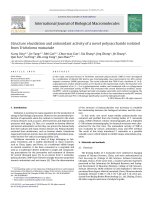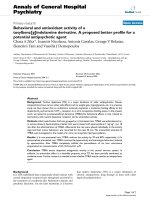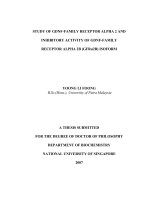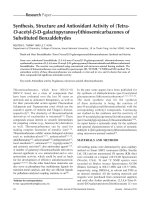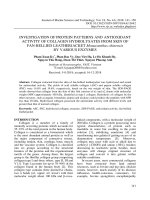Sulforaphane composition, cytotoxic and antioxidant activity of crucifer vegetables
Bạn đang xem bản rút gọn của tài liệu. Xem và tải ngay bản đầy đủ của tài liệu tại đây (1.41 MB, 6 trang )
�������������������������������������������������������������������������������������������������������������������������������������������������������������������������������������������������������������������������������������������������������������������������������������������������������������������������������������������������������������������������������������������������������������������������������������������������������������������������������������������������������������������������������������������������������������������������������������������������������������������������������������������������������������������������������������������������������������������������������������������������������������������������������������������������������������������������������������������������������������������������������������������������������������������������������������������������������������������������������������������������������������������������������������������������������������������������������������������������������������������������������������������������������������������������������������������������������������������������������������������������������������������������������������������������������������������������������������������������������������������������������������������������������������������������������������������������������������������������������������������������������������������������������������������������������������������������������������������������������������������������������������������������������������������������������������������������������������������������������������������������������������������������������������������������������������������������������������������������������������������������������������������������������������������������������������������������������������������������������������������������������������������������������������������������������������������������������������������������������������������������������������������������������������������������������������������������������������������������������������������������������������������������������������������������������������������������������������������������������������������������������������������������������������������������������������������������������������������������������������������������������������������������������������������������������������������������������������������������������������������������������������������������������������������������������������������������������������������������������������������������������������������������������������������������������������������������������������������������������������������������������������������������������������������������������������������������������������������������������������������������������������������������������������������������������������������������������������������������������������������������������������������������������������������������������������������������������������������������������������������������������������������������������������������������������������������������������������������������������������������������������������������������������������������������������������������������������������������������������������������������������������������������������������������������������������������������������������������������������������������������������������������������������������������������������������������������������������������������������������������������������������������������������������������������������������������������������������������������������������������������������������������������������������������������������������������������������������������������������������������������������������������������������������������������������������������������������������������������������������������������������������������������������������������������������������������������������������������������������������������������������������������������������������������������������������������������������������������������������������������������������������������������������������������������������������������������������������������������������������������������������������������������������������������������������������������������������������������������������������������������������������������������������������������������������������������������������������������������������������������������������������������������������������������������������������������������������������������������������������������������������������������������������������������������������������������������������������������������������������������������������������������������������������������������������������������������������������������������������������������������������������������������������������������������������������������������������������������������������������������������������������������������������������������������������������������������������������������������������������������������������������������������������������������������������������������������������������������������������������������������������������������������������������������������������������������������������������������������������������������������������������������������������������������������������������������������������������������������������������������������������������������������������������������������������������������������������������������������������������������������������������������������������������������������������������������������������������������������������������������������������������������������������������������������������������������������������������������������������������������������������������������������������������������������������������������������������������������������������������������������������������������������������������������������������������������������������������������������������������������������������������������������������������������������������������������������������������������������������������������������������������������������������������������������������������������������������������������������������������������������������������������������������������������������������������������������������������������������������������������������������������������������������������������������������������������������������������������������������������������������������������������������������������������������������������������������������������������������������������������������������������������������������������������������������������������������������������������������������������������������������������������������������������������������������������������������������������������������������������������������������������������������������������������������������������������������������������������������������������������������������������������������������������������������������������������������������������������������������������������������������������������������������������������������������������������������������������������������������������������������������������������������������������������������������������������������������������������������������������������������������������������������������������������������������������������������������������������������������������������������������������������������������������������������������������������������������������������������������������������������������������������������������������������������������������������������������������������������������������������������������������������������������������������������������������������������������������������������������������������������������������������������������������������������������������������������������������������������������������������������������������������������������������������������������������������������������������������������������������������������������������������������������� CA, USA) containing 10% foetal bovine serum (FBS,
Hyclone, Logan, UT, USA) as well as 0.2% glucose, 2 mM
glutamine, 500 lg mLÀ1 streptomycin, and 500 IU mLÀ1
penicillin.
Exponentially growing cells were plated in 96-well microplates (Costar, Corning Inc., USA) at a density of 3 · 103 cells
per well in 100 lL of culture medium, and were allowed to adhere for 16 h before treatment. Increasing concentrations of
plant extract in ethanol were then added (100 lL per well). Final concentration of ethanol in the culture medium was maintained at 0.5% (v/v) to avoid solvent toxicity. Sulforaphane
was used as a positive control at a concentration range from
0.5 to 100 lM. The cells were incubated for 48 h in the presence and absence of the extract. Cytotoxicity was assessed
using the 3-[4,5-dimethylthiazol-2-yl]-2,5-diphenyltetrazolium
bromide (MTT) according to the vendor’s protocol (Promega,
Madison, WI, USA). Absorbance was measured on automated
96-well microplate SpectraMax M5 (Molecular devices, CA,
USA) at wavelength 570 nm. Cytotoxicity here is expressed
as the concentration of plant extract inhibiting cell growth
by 50% relative to cells incubated in the presence of 0.5% ethanol (IC50 value). Each measurement was performed in
triplicate.
Sulforaphane composition, cytotoxic and antioxidant activity of crucifer vegetables
Antioxidant activity
Antioxidant activity was assayed using a modified quantitative
DDPH assay [13]. The solution of DDPH was prepared with
67
HPLC grade methanol and DDPH (Sigma–Aldrich, St. Louis,
MO, USA) at a concentration of 0.004%. Lyophilised extracts
were dissolved in water at a concentration of 0.1, 1, and
10 mg mLÀ1, with 5 lL of each test solution added to 100 lL
Figrue 2 GC-MS chromatograms for purified sulforaphane (SF) and sulforaphane peak identified in crucifer extracts. Peaks highlighted
with an asterisk represent that of SF. Insets (1) and (2) represent MS spectra of synthetic sulforaphane and isolated sulforaphane in
crucifers, whereas (3) illustrates MS spectra of dimethyldisulphide in cabbage. Chromatographic conditions are described under
‘‘Materials and methods’’.
80
60
40
20
0
e
li
ca
bb
ag
co
e
ag
oc
br
d
re
br
us
se
ls
ca
sp
bb
ro
ut
rn
ip
tu
le
100
80
60
40
20
0
ka
DDPH solution. Blank samples were run using only 99.9%
methanol. After a 30 min incubation period at room temperature, the absorbance was read against a blank at 550 nm. Vitamin E (Sigma–Aldrich) was used as positive control at a
concentration of 0.1, 1, and 10 mg mLÀ1. Inhibition of free
radicals by DPPH in percent (I%) was calculated according
to: I% = (Ablank À Asample/Ablank) · 100, where Ablank is the
absorbance of the control reaction (containing all reagents except the extract), and Asample is the absorbance of the extract.
Measurements were carried out in triplicate.
SF content (µg/g)
M.A. Farag, A.A. Motaal
Cell growth (% control)
68
Results and discussion
Sulforaphane content (SF) in crucifer as determined by GC-MS
The GC-MS technique developed by Matusheski et al. [12] was
used to quantify sulforaphane in crucifer extracts and to identify other sulphur compounds (Fig. 2). SF (rt 12.15 min) was
detected in all tested crucifers except in Chinese kale. The highest level was found in cabbage at a concentration of 540 lg gÀ1
fresh weight, followed by broccoli and brussels sprout at a concentration of 220 and 120 lg gÀ1, respectively. Lower levels of
SF were detected in turnip and red cabbage, at concentrations
of 60 and 48 lg gÀ1, respectively. It should be noted that SF
level in broccoli is in agreement with literature data [11]. Green
and red cabbage extracts showed, in addition to SF, another
major peak (rt 13.31 min) identified as dimethyldisulphide,
likely to be an artefact of S-methyl-L-cysteine degradation.
Dimethyldisulphide was identified as the predominant volatile
compound generated by thermal degradation of both S-methyl
cysteine and its sulfoxide in Brassica and Allium vegetables
[14]. Another unknown volatile compound (rt 10.89 min) was
detected in brussels sprout’s extract (Fig. 2).
Anticancer activity of crucifer aqueous and organic extracts
To correlate between SF composition and cytotoxic effects for
crucifer vegetables, anticancer activity was assessed for investigated plant extracts. Anticancer activity of crucifer extracts
Table 1 Cytotoxicity of crucifer vegetables aqueous extracts
on A-549 growth.
Extract/compound
Green cabbage
Broccoli
Brussels sprout
Chinese kale
Turnip
Red cabbage
Sulforaphane
Cytotoxicity (cell proliferation as
% of control) (lg mLÀ1)
0.5
5
50
500
92
76
88
90
84
88
99
76
68
75
71
72
66
92
65
66
64
57
68
74
67
37
61
72
59
65
73
31
Cells grown to 75% confluence in 96-well plates were incubated in
the presence of the extracts for 72 h. Cell viability was measured by
the MTT assay and is expressed as a percentage of cell viability
without extract. The extracts were tested at 0.5, 5, 50, and 500
lg mLÀ1. Cytotoxicity values greater than 30% are shown in bold.
The results are the average of three independent experiments with
less than 10% standard deviation.
Figure 3 Anticancer activity against A-549 (human lung carcinoma) and sulforaphane (SF) content of crucifer organic extracts.
Results are expressed for cytotoxicity as cell growth (% of control)
on the Y1 axis and for SF content in lg gÀ1 as displayed on
the Y2 axis.
was assessed against A-549 cell line (human lung carcinoma)
along with sulforaphane standard and the antitumour agent
sodium selenite as positive control [15]. The cytotoxic activity
data are presented in Table 1. Green cabbage extract exhibited
a pronounced cytotoxic effect (37% cell survival at
500 lg mLÀ1) comparable to that of sulforaphane, with 31%
cell survival at the same concentration. In contrast, red cabbage extract enriched in anthocyanins exhibited the least cytotoxic activity (73% cell survival) at 500 lg mLÀ1, implying its
weak effect against human A-549 cells. Similarly, anthocyanins
present in apple aqueous extracts demonstrated weak cytotoxic
effect against human leukemic HL-60 cells [16]. The results in
Table 1 indicate that broccoli, Chinese kale and turnip extracts
exhibit moderate cell growth inhibition, ca. 60–70% cell survival at 500 lg mLÀ1.
To further confirm whether sulphur compounds in crucifer
aqueous extract can account for its cytotoxicity against A-549
cells, organic extracts enriched in SF, as analysed by GC-MS
(Fig. 2), were assessed for their cytotoxic effect against A549 cell line. A positive relationship appears to exist between
SF content and cytotoxicity in case of green cabbage and broccoli (Fig. 3). In contrast, turnip and red cabbage extracts
exhibiting the lowest SF levels demonstrated the least cytotoxic
effects (Fig. 3).
Antioxidant activity of crucifer aqueous extracts
Oxidative stress may initiate molecular events in the cancer
process, and reduction of oxidative stress may protect against
carcinogenesis [17]. Crucifers contain numerous antioxidant
substances that could potentially induce antioxidant enzymes,
and combinations of these may protect against carcinogenesis
[18]. Crucifer aqueous extracts were assessed for their capacity
to scavenge DDPH free radicals along with vitamin E as positive control. The antioxidant activity data in terms of free radical inhibition are presented in Table 2. Except for red cabbage
and Chinese kale, with an inhibition of 73% and 54%, respectively, other crucifer extracts displayed moderate to weak
capacity in scavenging DDPH radicals at a dose of
10 mg mLÀ1. These results are in agreement with previous reports showing that Chinese kale exhibits the highest antioxidant activity in quenching ABTS free radicals relative to
broccoli, brussels sprout and cauliflower. Chinese kale con-
Sulforaphane composition, cytotoxic and antioxidant activity of crucifer vegetables
Table 2 Antioxidant activity assayed by DPPH test of
crucifer extracts (expressed as % bleaching) in term of free
radical inhibition.
Extract/compound
Green cabbage
Broccoli
Brussels sprout
Chinese kale
Turnip
Red cabbage
Sulforaphane
Vitamin E
(mg mLÀ1)
0.1
1
10
–
–
–
7
1
4
–
17
–
2
1
9
2
20
1
82
3
21
23
45
25
73
2
85
Extracts were tested at 0.1, 1, and 10 mg mLÀ1. Inhibition values
greater than 40% are shown in bold. The results are the average of
three independent experiments with less than 10% standard deviation. (–) Indicates inhibition less than 1%.
tains the highest levels of several antioxidising agents, including vitamin C, carotenoids, and polyphenols [19,20]. The pronounced effect in red cabbage could be attributed to the
prevalence of anthocyanins in its extract. Several highly conjugated anthocyanins were identified in red cabbage [21], with
potential antioxidant activities [22]. Broccoli is reported to
provide moderate antioxidant capacity, likely attributed to
tocopherols and flavonoids [23]. Results from SF inactivity
in scavenging DDPH free radicals (Table 2) suggest that it
does not contribute to the antioxidant capacity of broccoli
and other crucifers.
Conclusion
This study indicates that green cabbage has potential as a dietary supplement in cancer chemoprevention and helps draw
further evidence for the role of SF in cancer prevention in
other members of family Cruciferae. More research is still
needed to help identify other bioactive sulphur compounds
in crucifers.
Conflict of interest statement
The author reports no conflicts of interest. The author alone is
responsible for the content and writing of the paper.
Acknowledgments
The author thanks Dr. George Wagner, Department of Plant
Sciences, University of Kentucky, for assistance with GC-MS
analysis and Dr. Teresa Fan, University of Louisville, USA
for assistance with the anticancer assay.
References
[1] Cohen JH, Kristal AR, Stanford JL. Fruit and vegetable intakes
and prostate cancer risk. J Natl Cancer Inst 2000;92(1):61–8.
[2] Huang MT, Ferrero T, Ho CT. Cancer chemoprevention by
phytochemicals in fruit and vegetables. In: Huang MT, Osawa T,
Ho CT, Rosen RT, editors. Food phytochemicals for cancer
prevention I. Fruits and vegetables. Washington, DC: American
Chemical Society; 1994. p. 2–16.
69
[3] Zhang Y, Talalay P, Cho CG, Posner GH. A major inducer of
anticarcinogenic protective enzymes from broccoli: isolation and
elucidation of structure. Proc Natl Acad Sci USA
1992;89(6):2399–403.
[4] Kore AM, Spencer GF, Wallig MA. Purification of the x-methylsulfinylalkyl-glucosinolate hydrolysis products: 1-isothiocyanato3-(methylsulfinyl)-propane
(IMSP),
1-isothiocyanato-4(methylsulfinyl)-butane (IMSB), 4-(methylsulfinyl)-butanenitrile
(MSBN) and 5-(methylsulfinyl)-pentanenitrile (MSPN) from
broccoli and Lesquerella fendleri. J Agric Food Chem
1993;41:89–95.
[5] Rose P, Huang Q, Ong CN, Whiteman M. Broccoli and
watercress suppress matrix metalloproteinase-9 activity and
invasiveness of human MDA-MB-231 breast cancer cells.
Toxicol Appl Pharmacol 2005;209(2):105–13.
[6] Fahey JW, Haristoy X, Dolan PM, Kensler TW, Scholtus I,
Stephenson KK, et al. Sulforaphane inhibits extracellular,
intracellular and antibiotic-resistant strains of Helicobacter
pylori and prevents benzo[a]pyrene-induced stomach tumors.
Proc Natl Acad Sci USA 2002;99(11):7610–5.
[7] Talalay P, Fahey JW, Healy ZR, Wehage SL, Benedict AL, Min
C, et al. Sulforaphane mobilizes cellular defenses that protect
skin against damage by UV radiation. Proc Natl Acad Sci USA
2007;104(44):17500–5.
[8] Prestera T, Talalay P. Electrophile and antioxidant regulation of
enzymes that detoxify carcinogens. Proc Natl Acad Sci USA
1995;92(19):8965–9.
[9] Barcelo S, Gardiner JM, Gescher A, Chipman JK. CYP2E1mediated mechanism of anti-genotoxicity of the broccoli
constituent sulforaphane. Carcinogenesis 1996;17(2):277–82.
[10] Jeffery EH, Jarrell V. Cruciferous vegetables and cancer
prevention. In: Wildman REC, editor. Handbook of
nutraceuticals and functional foods. Boca Raton, FL: CRC
Press; 2001. p. 182–5.
[11] Bertelli D, Plessi M, Braghiroli D, Monzani A. Separation by
solid-phase extraction and quantification by reverse phase
HPLC of sulforaphane in broccoli. Food Chem 1998;63:417–21.
[12] Matusheski NV, Wallig MA, Juvik JA, Klein BP, Kushad MM,
Jeffery EH. Preparative HPLC method for the purification of
sulforaphane and sulforaphane nitrile from Brassica oleracea.
J Agric Food Chem 2001;49(4):1867–72.
[13] Shimada K, Fujikawa K, Yahara K, Nakamura T.
Antioxidative properties of xanthan on the autoxidation of
soybean oil in cyclodextrin emulsion. J Agric Food Chem
1992;40:945–8.
[14] Kubec R, Drhova´ V, Velı´ sek J. Thermal degradation of
s-methylcysteine and its sulfoxide-important flavor precursors
of Brassica and Allium vegetables. J Agric Food Chem
1998;46:4334–40.
[15] Letavayova L, Vlckova V, Brozmanova J. Selenium: from
cancer prevention to DNA damage. Toxicology 2006;227(1–2):
1–14.
[16] Yoshizawa Y, Sakurai K, Kawaii S, Asari M, Soejima J,
Murofushi N. Comparison of antiproliferative and antioxidant
properties among nineteen apple cultivars. HortScience
2005;40(5):1204–7.
[17] Hwang ES, Bowen P. DNA damage, a biomarker of
carcinogenesis: Its measurement and modulation by diet and
environment. Crit Rev Food Sci Nutr 2007;47(1):27–50.
[18] Williamson G, Plumb GW, Uda Y, Price KR, Rhodes MJ.
Dietary quercetin glycosides: antioxidant activity and induction
of the anticarcinogenic phase II marker enzyme quinone
reductase in Hepalclc7 cells. Carcinogenesis 1996;17(11):2385–7.
[19] Ayaz FA, Hayırlıoglu Ayaz S, Alpay Karaoglu S, Gru´z J,
Valentova´ K, Ulrichova´ J, et al. Phenolic acid contents of kale
(Brassica oleraceae L. var. acephala DC.) extracts and their
antioxidant and antibacterial activities. Food Chem
2008;107(1):19–25.
70
[20] Sikora E, Cies´ lik E, Leszczyn´ska T, Filipiak-Florkiewicz A,
Pisulewski PM. The antioxidant activity of selected cruciferous
vegetables subjected to aquathermal processing. Food Chem
2008;107(1):55–9.
[21] Wu X, Prior RL. Identification and characterization of
anthocyanins by high-performance liquid chromatography–
electrospray ionization-tandem mass spectrometry in common
foods in the United States: vegetables, nuts and grains. J Agric
Food Chem 2005;53(8):3101–13.
M.A. Farag, A.A. Motaal
[22] Aaby K, Ekeberg D, Skrede G. Characterization of phenolic
compounds in strawberry (Fragaria · ananassa) fruits by
different HPLC detectors and contribution of individual
compounds to total antioxidant capacity. J Agric Food Chem
2007;55(11):4395–406.
[23] Plumb GW, Price KR, Rhodes MJ, Williamson G. Antioxidant
properties of the major polyphenolic compounds in broccoli.
Free Radic Res 1997;27(4):429–35.
